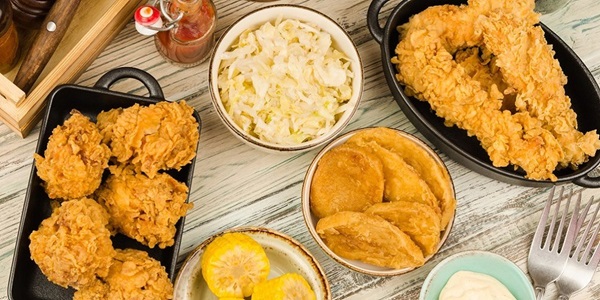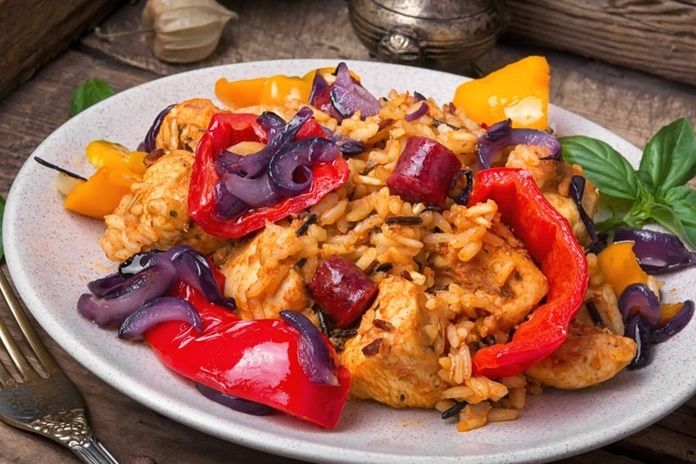Every year on October 11, Southern Food Heritage Day is observed. The Southern Food and Beverage Museum honors the rich and tasty food from the Southern States in America. This cuisine is important and deserves special recognition because it reflects American history and culture. Southern food symbolizes the blend of different people from around the world, each bringing their ingredients and recipes to create a unique style of cooking. Popular Southern foods like iced tea, pickled shrimp, and fried chicken have been loved for generations. The day also celebrates America’s racial and ethnic diversity.
History of Southern Food Heritage Day
Southern Food Heritage Day honors the rich flavors of Southern food and drinks. This cuisine, found in the regions south of the Mason-Dixon line and extending west to parts of Missouri, Oklahoma, and Texas, has a deep historical background. The main influences on Southern cooking come from African, English, Scottish, Irish, German, French, and Native American cultures.
Southern food is a mix of various cultures and culinary traditions. Native American, Spanish, French, and British influences all played a role in shaping Southern cuisine. Native American tribes like the Caddo, Choctaw, and Seminole introduced ingredients like squash, tomatoes, and corn, as well as cooking methods such as deep pit barbecuing.
Many foods made from sugar, flour, milk, and eggs have European origins. African contributions include ingredients like black-eyed peas, okra, rice, eggplant, sesame seeds, sorghum, and melons, along with various spices.
Southern food can be divided into different categories. ‘Soul food’ is influenced by African cooking, featuring greens, vegetables, rice, and nuts like peanuts, along with dishes like okra, collard greens, and thick stews. ‘Creole food’ has a French touch, while ‘Cajun cuisine’ reflects the cooking traditions of Canadian immigrants.
‘Lowcountry’ cuisine is known for its seafood and rice, and Appalachian food focuses on preserved meats and vegetables. Southern food also has a strong connection to corn, influenced by Native American traditions.
| 1860 (Southern Diet Expands) | Following the emancipation from slavery, the Southern diet becomes versatile. |
| 1916 (The Great Migration) | African Americans travel from rural communities in the South to large cities in the North and West — they carry their cuisine with them. |
| 1940s (Southern Foods in Restaurants) | Southern foods start appearing on restaurant menus and appeal to a diverse clientele. |
| 1964 (Soul Food) | This term, describing everyday Southern food, first appears in print. |
Five Interesting Facts About Southern Foods
- Redeye gravy is uniquely made from pan drippings and leftover coffee.
- Southern fried chicken breast is quite calorie-dense, with over 400 calories per ounce.
- Peanut butter is crucial in Southern cuisine, with half of the annual peanut crop used to make it.
- Collard greens have been a staple in diets for over 2,000 years.
- Black-eyed peas are thought to bring good luck, especially when eaten on New Year’s Day.

Regional Variations
While Southern cuisine shares many common elements, it also varies significantly across the region. Different states and even counties have their unique culinary traditions. For example:
- Creole Cuisine in Louisiana is known for its rich, complex flavors and includes dishes like jambalaya, étouffée, and beignets. Creole cooking reflects the multicultural heritage of New Orleans, with influences from French, Spanish, and African cuisines.
- Lowcountry Cuisine from South Carolina and Georgia emphasizes seafood and rice, with dishes like she-crab soup and Hoppin’ John (a dish made with black-eyed peas and rice). The use of local ingredients and traditional cooking methods is a hallmark of this cuisine.
- Appalachian Cuisine from the mountainous regions of Kentucky, Tennessee, and West Virginia often features hearty, rustic dishes like cornbread, biscuits, and gravy, and various types of stews. This cuisine reflects the resourcefulness of early settlers who relied on local ingredients and simple preparation methods.
Conclusion
In conclusion, Southern Food Heritage Day on October 11 serves as a vital celebration of the diverse and flavorful culinary traditions that define the American South. This day acknowledges the rich tapestry of influences that have shaped Southern cuisine, from Native American ingredients and African spices to European cooking techniques. By honoring dishes like fried chicken, collard greens, and jambalaya, we not only appreciate the unique flavors but also recognize the cultural exchanges and historical narratives embedded in Southern food.
Southern Food Heritage Day highlights the significance of this cuisine in reflecting America’s racial and ethnic diversity and its ongoing influence on both regional and national food landscapes. Celebrating this day helps preserve and share the stories behind these beloved dishes, ensuring that the legacy of Southern food continues to enrich our cultural heritage.
Frequently Ask Question
What are some popular Southern foods celebrated on this day?
Popular Southern foods include iced tea, pickled shrimp, fried chicken, and dishes like collard greens, jambalaya, and she-crab soup. These foods have been loved for generations and are celebrated for their rich flavors and historical significance.
What are the main influences on Southern cuisine?
Southern cuisine is influenced by a mix of cultures, including African, English, Scottish, Irish, German, French, and Native American. Key contributions include Native American ingredients and cooking methods, European food staples, and African spices and vegetables.
You may also like to read, National Goose Day – September 29, 2024
